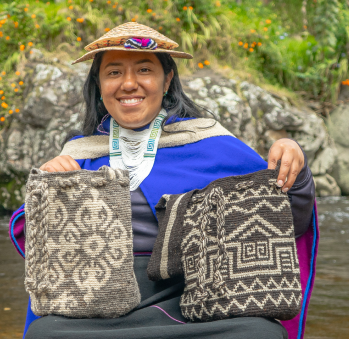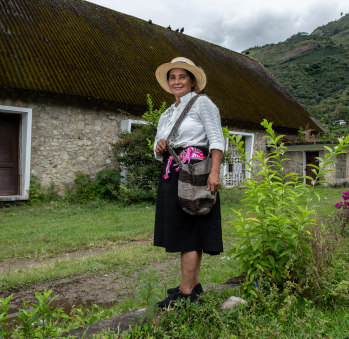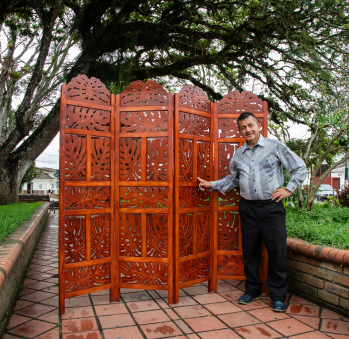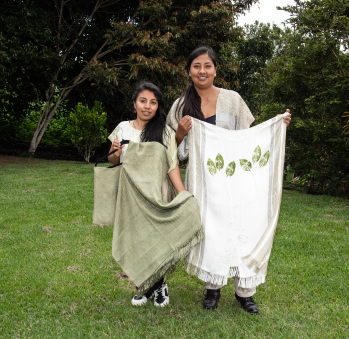Viviana Tombé
Workshop: Casa del Colibrí
Craft: Weaving
Trail: Popayán-Páez Route
Location: Silvia, Cauca
SCHEDULE YOUR VISIT
Calle 13 # 9 -11 barrio Chiman, Silvia, Cauca
3148007188
tsatsoya@gmail.com
@turismisak
La Casa del Colibrí is a tourism and handicraft venture created in 2016 by Viviana Tombé, Sandra Tunualá, and Víctor Mera. It is an inspiring example of how the new generations of Misak indigenous people from the community of Guambía in the town of Silvia are preserving their roots. Viviana is sweet, eloquent, and generous when it comes to sharing her knowledge. She is interested in explaining what it means to be Misak and how proud she feels to be part of this culture nestled in the mountains of Cauca. She says that entering this world involves understanding land as its own being, worthy of rights and recognition. Furthermore, being Misak means to live in a community where everybody works and makes decisions together. The goal of this indigenous group is to advocate for the well-being of the land, and to guarantee the greater good for everyone who lives in it.
Although her mother was not born in Guambía, but in Córdoba, Nariño, she has lived in these lands for more than four decades. The four children of the Tombé family were also raised there. The same is true for her partner, Víctor, who is from Pasto, but since he is fully integrated into the Misak life, he has even registered as a member of the community.
Viviana explains to us what it is like to be Misak. She tells us about their attire and its meaning. She started by explaining us the meanings of the colors. The typical attire, which surprises us as a big, magnificent stain of fuchsia, blue and black when we enter Silvia, displays the colors of the Misak flag. These colors were dreamt of by a Taita, eight decades ago. The fuchsia, or red, represents the blood spilled in times of colonization; the blue, as they are children of water, symbolizes their lakes and lagoons; the black represents Mother Earth, refuge of roots and seeds. Every Misak wears them with pride and protects their tradition. For example, the hat or tambalguari, is unique and only the person who wove it can wear it (or sell it,) since the stitches of their existence are intertwined in its spirals. To wear it is to have the knowledge of the cycle of life. It is accompanied by two woven wool tassels that hang on the front of the tambalguari. These represent the complementary nature of men and women.
Chumbes, necklaces and mochila bags are also an essential part of the Misak attire. They tell the story of their people. Symbols of the harvest, corn, women, lakes, and animals are depicted on them. the Misak flower represents the months of the year, and each point of the star represents the elements and reflects the changes of the moon. They use the chumbes to wrap the children like a “tabaquito” when they are small, so that they grow up physically and morally straight. When it comes to the tradition of the necklaces, it is important to explain that, decades ago, they used to amount to up to three pounds of clay around the neck of each woman. Today, they are white and represent the harmony and tranquility of the territory. Women wear these necklaces because they are life givers and caretakers.
This artisan workshop seeks to bring the visitor into close contact with the culture. It wants the visitors to immerse themselves in it and discover the Misak spirit through meaningful encounters. The ritual significance of the wares they use is always remarked to avoid the risk of falling for cultural appropriation. Viviana and her team have made a special emphasis on the creation of handcrafted pieces that retain special meanings, but they also strive to produce jewelry and mochila bags that do not counter the spiritual nature of the original attire. They know that this is the way to generate resources for a community that needs them, without harming their heritage and educating the visitor to have respect towards the process.
Craft










Artisans along the way
Artisans along the way
No puede copiar contenido de esta página

































































